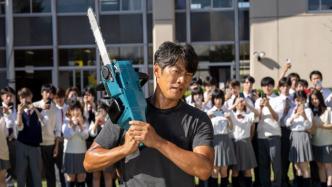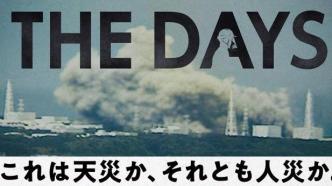
The five-episode miniseries "Chernobyl" produced by HBO in 2019 not only won multiple Emmy Awards in the second year, but is still ranked among the top 5 American dramas on IMDB over the years. At the same time, Douban also has a high score of 9.6. Inspired, this Japanese TV series invested and produced by Netflix aimed at the Fukushima nuclear power plant crisis in 2011. Recently released on Netflix.
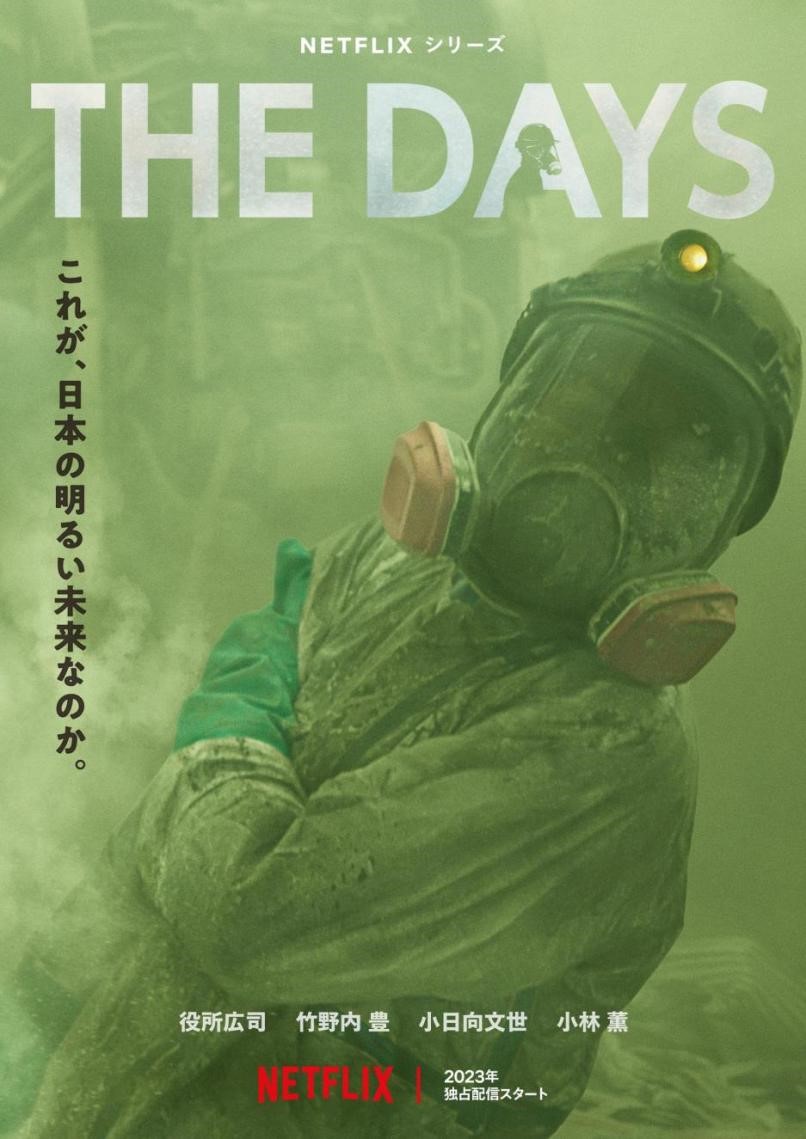
"Nuclear Sun and Moon" poster
When Americans went to shoot Soviet themes, "Chernobyl" showed a sense of cold onlookers, the bureaucratic problems of foreign governments, the evil system of all officials cheating the top and bottom, and the extreme disregard for the lives of ordinary people. , all made biting revelations that made the audience shudder. In fact, the accident at the Chernobyl nuclear power plant, according to investigations, was indeed caused mainly by human factors. The film and television drama not only restores the problems, but even based on ideological reasons, the theme appears more desperate and cold.
As for "Nuclear Disaster Sun and Moon", when the Japanese themselves review major issues in their own country, they must be more cautious in their creative attitude and theme handling. This has caused even if it is not a documentary, the perspective of this play is quite rigorous, and there are hardly many traces of deliberate fabrication. The main plot revolves around the most tense week of the Fukushima incident, describing the continuous handling of the crisis by the employees of the nuclear power plant, the senior executives of the Tokyo Electric Power Company, and the Japanese Prime Minister and ministers.

There are many supporting roles in this film, and it is a group portrait play.
At the end of the last eighth episode, when the story was basically over, the director spent 20 minutes, using a large amount of news video materials as the base, supplemented by the protagonist's narration, to create an objective perspective similar to a documentary, and to explain the cause of the nuclear accident. And the influence made the most concluding speech.
From the point of view of creation, the main plot is basically a restoration based on the fact that the director has absorbed a lot of facts. "Whether the story is exciting or not" is secondary. Whether there is a reasonable explanation and explanation for the witnesses of the incident, all Japanese citizens, and even international audiences outside the region is a more important issue in this drama.
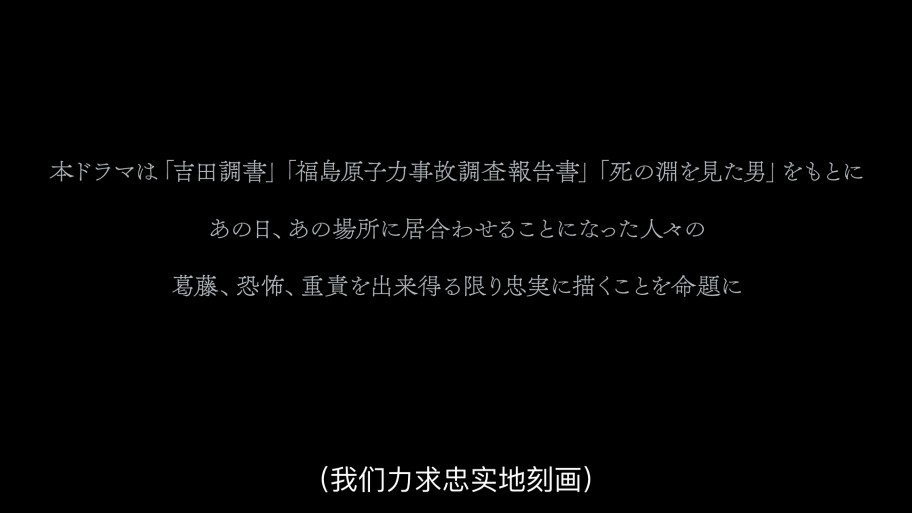
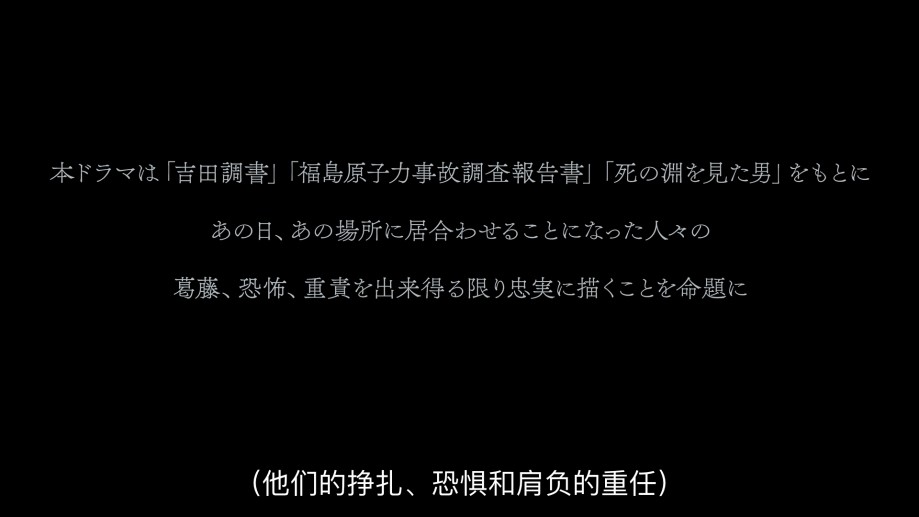
The subtitles of the eighth episode of the film explain the source of the adaptation, which is the testimony of Masahiro Yoshida, the station chief of the nuclear power plant, the official "Fukushima Nuclear Power Plant Accident Investigation Report", and the "Fukushima Nuclear Power Plant Accident Investigation Report" written by reporter Takashi Kadoda after interviewing more than 90 people. On the Brink of Collapse: Inside the Fukushima Daiichi Nuclear Power Plant.
The main cause of the Fukushima nuclear power plant accident, as shown at the beginning of the first episode, is basically caused by natural disasters. On March 11, 2011, an earthquake of 9.0 on the Richter scale occurred in the eastern Pacific region of Japan, and later triggered a tsunami, causing disasters in many parts of the country. As the largest nuclear power plant in service in the world at that time, the Fukushima nuclear power plant had two units in total, of which the first nuclear power plant had 6 units and the second nuclear power plant had 4 units. Because it is near the sea, although there are defensive facilities, the original design can only withstand the wave height of 5.7 meters, but the highest wave on that day reached 14 meters. Under the double damage of the tsunami and the earthquake, the First Nuclear Power Plant not only lost the support of external power, It also made it difficult for follow-up forces to rush to aid in time through the destroyed road.
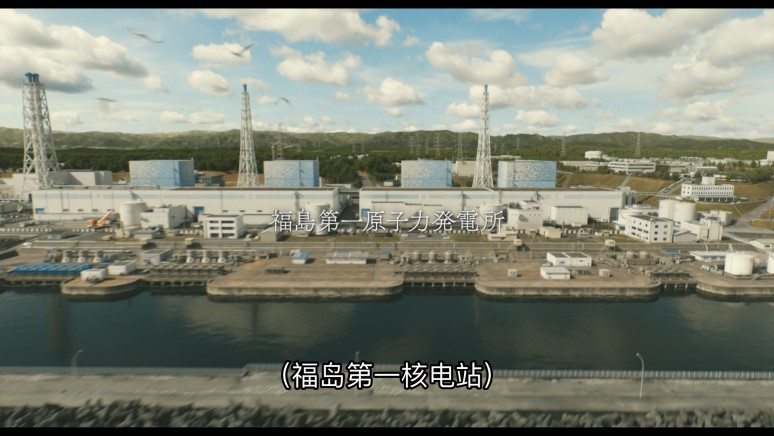

In the play, the nuclear power plant, which was neat and orderly during the day, has been swallowed up by the tsunami at night.
Units 1, 2, and 3 of the First Nuclear Power Plant were in power operation at that time, while units 4, 5, and 6 were shut down for maintenance. Because of the loss of power, the core heat could not be cooled by the continuous injection of cold water, and gradually generated high temperature and high pressure under continuous accumulation, and finally three hydrogen explosions occurred. They were the explosion of unit 1 on March 12, the explosion of unit 3 on March 14, and the explosion of unit 4 on March 15. Many reflective materials floated into the air.
After the three explosions, the internal pressure of the reactor was reduced, coupled with subsequent effective reinforcement measures, the nuclear reactor was finally brought back under control.
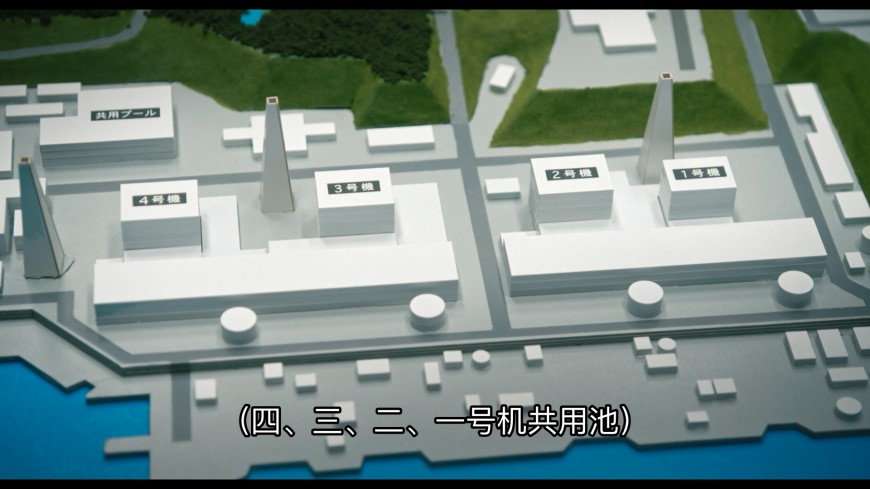
Judging from the model in the play, one to four reactors are the closest to the coastline and are seriously affected by the tsunami. So the three subsequent hydrogen explosions are among them.
From the facts, although the Fukushima nuclear accident leaked nuclear pollution, many adjacent areas are still uninhabited, but compared with the Chernobyl incident, the harm is still much reduced. The latter was a direct reactor explosion, and the radiation was exposed to the air, which had extremely serious consequences for subsequent personnel cleanup and environmental impact. The victims officially identified by the Soviet Union were mainly the 31 firefighters who arrived at the beginning. In fact, there may be thousands of accident rescuers who were seriously injured by the nuclear radiation at the scene. The main victims of the Fukushima accident were the two staff members who died in the impact of the tsunami. The other staff were well protected and there were no more serious consequences.
Some people estimate that the loss of the Fukushima nuclear accident is only one-tenth of that of Chernobyl. However, the Japanese government subsequently discharged water containing nuclear waste directly into the Pacific Ocean. Although the radiation level was not high, it had an impact on trade and the security of neighboring countries. This is the reason why the accident has attracted more attention from the international community.
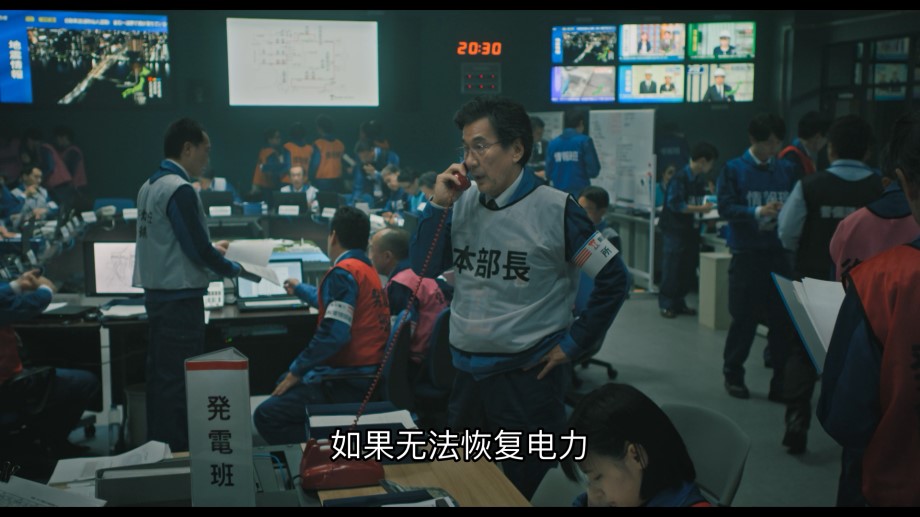
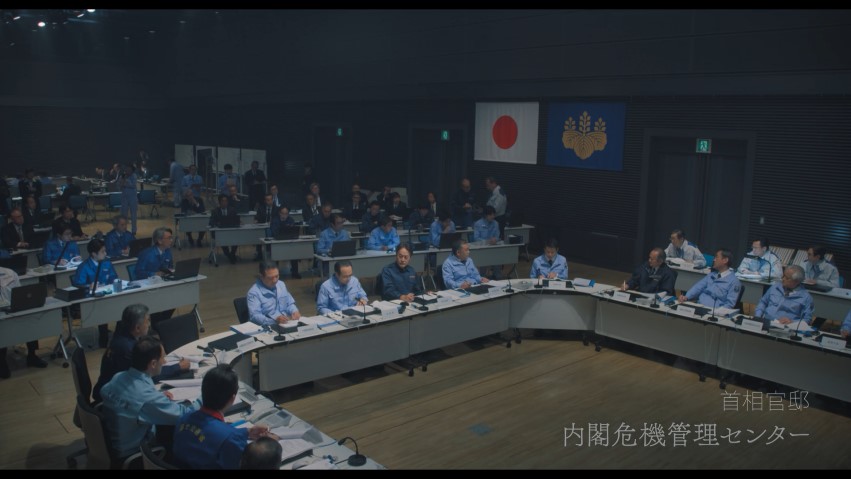
Different temporary headquarters have a rigorous and busy feeling.
In the first two episodes, it can be seen that under the impact of the earthquake and tsunami, the Fukushima nuclear power plant is mainly facing power outages. In addition to the on-site staff actively trying to find a way, the upper-level TEPCO and the Japanese Prime Minister are also learning about information, giving feedback and making decisions. Most of the scenes are similar to being in a meeting. After the disaster, personnel at all levels quickly organized a busy and orderly temporary headquarters. From the neatness of the tables and chairs, the stacking of rescue supplies and other details, it can be seen that Japan, as a country with frequent natural disasters, actually We are quite prepared for the part of disaster reduction and prevention. The meticulous and calm and rigorous process still makes people feel quite admirable.
For ordinary viewers who have only read news reports, after seeing these visual restorations, they will better understand that in the face of unexpected emergencies, the staff are basically competent. They try to handle the stress and solve the problem at work, with almost no human error in the follow-up part.
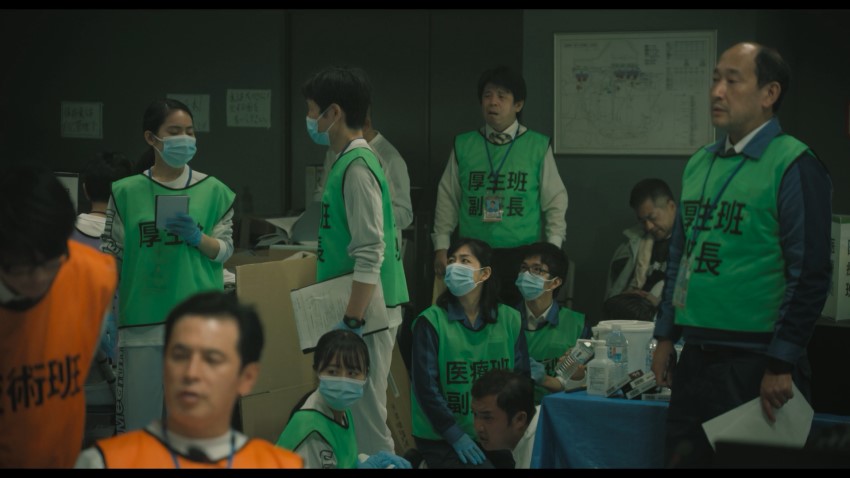
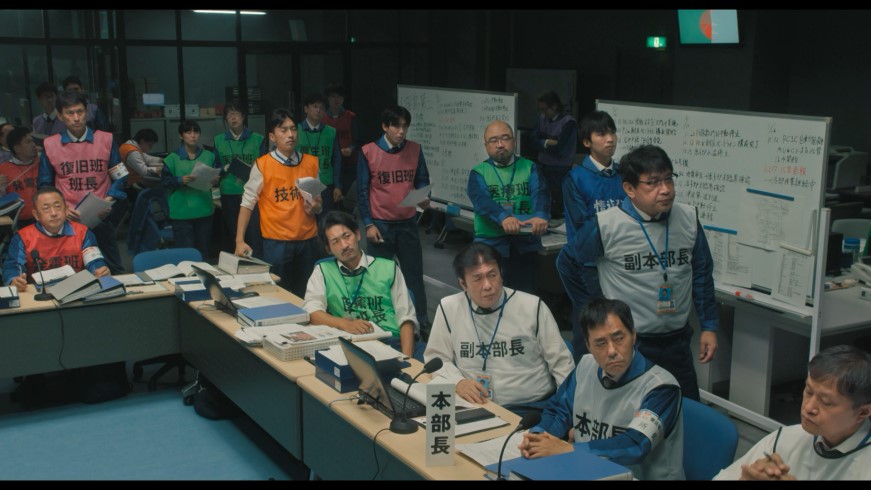
Even if it is a temporary headquarters, you can still see that the members of each team perform their duties, and even put on simple vests of different colors to clarify their positions and speed up communication efficiency. This awareness of disaster prevention and orderly response is breathtaking.
In this film, the veteran movie actor Koji Yakusho plays the calm and reliable director of the nuclear power plant. He is the most critical decision-maker; It is a team of operators who are more on the front line; at the same time, the Japanese Prime Minister played by "Golden Supporting Actor" Fumyo Kohinata also left a deep impression on people. These few characters constitute the clues of event handling from the micro to the macro in the play, and the appearance of some other temporary characters in the team basically restores the efforts that all parties involved are trying to make.

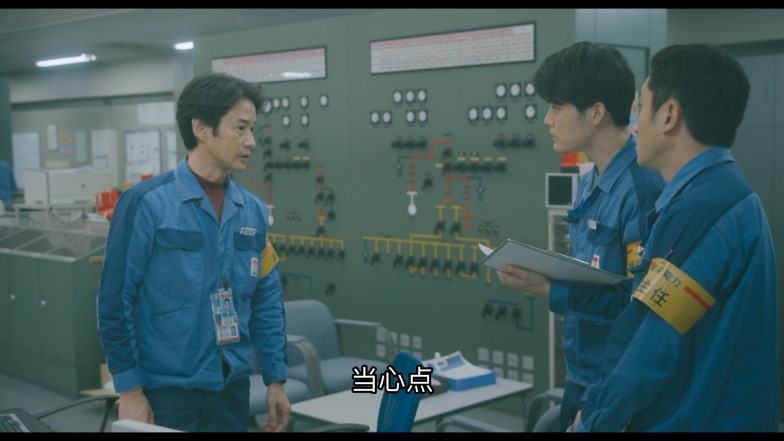
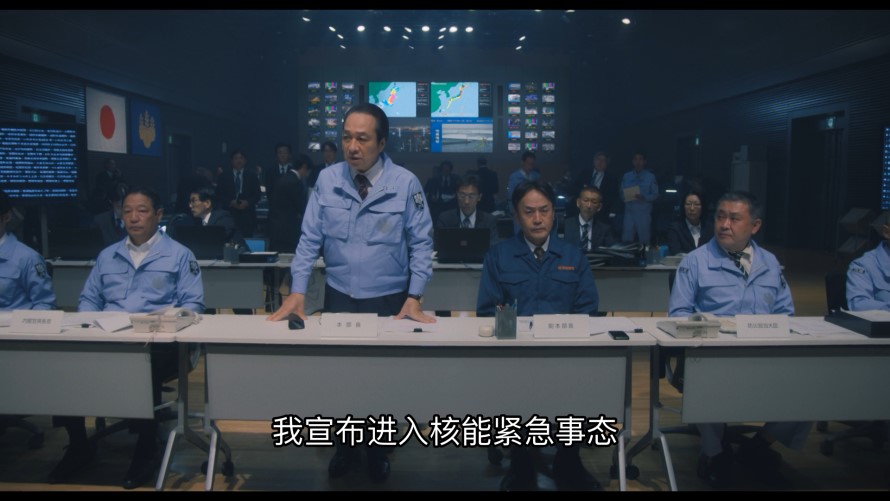
The three main actors are in their own different environments, and most of the plot is a parallel narrative with multiple clues for characters at all levels.
Overall, this is a show with no bad guys. From the creative standpoint of adapting major real-life events, it may be very difficult to specifically describe a certain character as a "bad guy". So in the end, the two protagonists and the nuclear power plant personnel in the play are all brave and fearless, and the relatively wretched villains are probably only the Japanese Prime Minister and a few nuclear power experts led by him. The Prime Minister is rude and incompetent and likes to express opinions indiscriminately. He also behaved groveling and a little clownish in the phone call with the President of the United States; while the two experts beside him are representatives of evading responsibility and eating a dead body.
The identity of the characters is too narrow, which actually hinders the dramatic development of the play objectively. The whole story is that the contradictions between the characters are not sharp enough, "the play is not ruthless enough". Although judging from the play's promotional copy and the opening character narration, the director wanted to explore the grand proposition of "what did we do wrong", but in the end he couldn't answer the reason. It seems that the overall feeling is that in the face of sudden natural disasters, what humans can do is very limited. Most of the time, everyone worked hard to stick to their posts and find a way. Only layman leaders like to express their opinions blindly. Of course, it's fine to ignore him, and it doesn't cause more harm in fact.
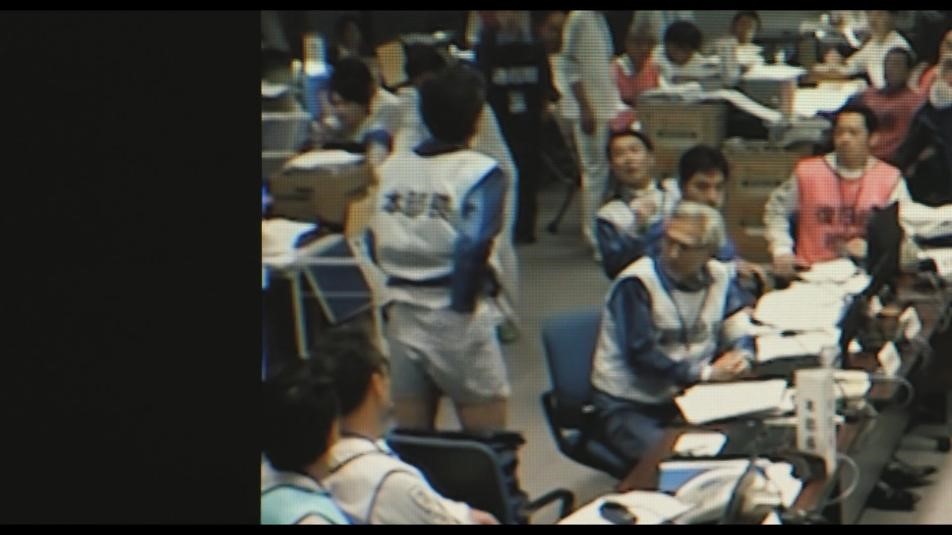
In the face of the prime minister's outrageous words, the director of the nuclear power plant expressed his dissatisfaction with a strange movement in the video connection, which is a rare contradiction and confrontation among the characters in the whole play.
For actual crisis events, this is probably a close-to-objective summary of the government report. After all, the factors of natural disasters in the Fukushima incident are far more than man-made disasters. cause massive power outages. But for the series, such an answer is a bit tepid, and the plot can hardly be said to be particularly ups and downs.
The director of the first three episodes and the last three episodes of this drama is Masaki Nishiura, who has many years of experience in creating Japanese dramas. There are many works of his, although it is not outstanding in style, but in the face of the story processing of multiple clues, the overall rhythm control is quite sophisticated. The handling of many emotional passages such as tension, touching, and depression still have a profound impact on people, and one can appreciate the enormous psychological pressure faced by the personnel who stick to the site of the nuclear power plant.
The director of the middle two episodes is Hideo Nakajima, who was famous for horror films such as "Midnight Ring" in his early years. There is a clue in these two episodes that describes the on-site operators in a dark nuclear power building, trying to overcome the impact of nuclear radiation and psychological fear, hoping to open the valve manually to complete the water injection to the reactor. It may be that this slightly scary atmosphere in the dark is more suitable for Hideo Nakajima, who was born in horror films.
Even if the overall story lacks big waves, both directors seem to be trying their best.
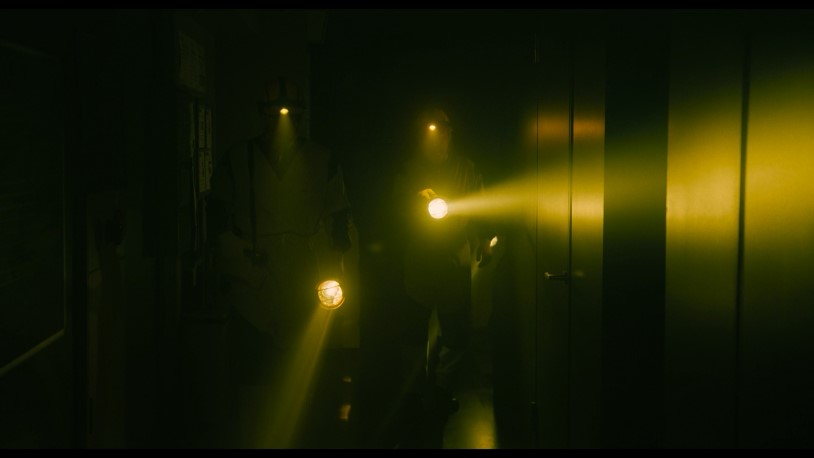
Some on-site personnel were groping in the dark, and seemed to want the horror film director to play a role. But in fact, there is only the danger of nuclear radiation, there are no ghosts or murderers, and there is nothing more to play.
It's just because of being too rigid about the facts, after the overall tense atmosphere in the first two episodes spread out, the middle part of the plot seemed a little weak. For viewers who are not familiar with the development of the incident, what they saw was the process of "numerical alarm-the staff tried their best to find a way-and finally exploded", and it exploded three times, which inevitably seems repetitive, and the specific plot descriptions are also different. There isn't much difference, and all the crew can do is try to fill the reactor with water. As a result, although the process and difficulties are specific and subtle, there are not many plots that can surprise people.


The drama of choosing who to sacrifice has appeared several times in the drama. Although these personnel survived in the end. From the scene alone, the play is touching. But too many are the same.
In some impressive scenes, in the face of the danger of nuclear radiation, the on-site leaders such as the team must arrange personnel to "sacrifice". The inner struggle of the leader, the touch brought by the staff's "voluntary petition", and even the plot of the elderly who have to sacrifice themselves and do not want young people to take risks, all have similarities with "The Wandering Earth 2". For Chinese audiences who are familiar with the main themes and themes, they have actually seen a lot of such dramas. In Japan, a society that is highly collectivized and emphasizes responsibility, although the staff did not talk about much truth, they all have the dignity of sticking to the post. Therefore, the characters' "love and dedication" is still worth remembering in the plot. moment of highlight.
It's just that the more you look at the back, you will find that no matter how hard the protagonists work hard, there are actually not many things they can do. Even using military helicopters of the Self-Defense Forces to participate in the rescue, using building ladders of other companies to add water spray, etc. These seem to be disaster reduction solutions that can be thought of in the second episode, but instead become the ultimate means of overcoming difficulties in the last episode of the whole show . This is a bit surprising.
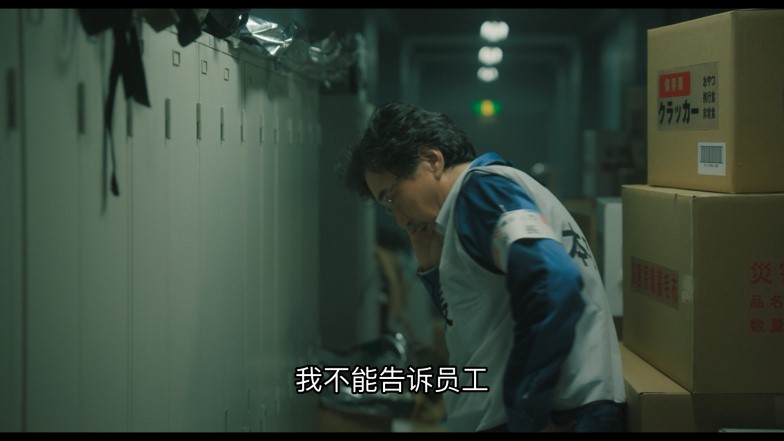

The director of the nuclear power plant in the play always shows a "human life is the most important" attitude. In the face of huge disasters, whether it is possible to truly avoid the risk of personnel while taking effective disaster reduction measures is a matter of opinion.
Even without much critical creative attitude, the plot of the whole drama, in addition to showing the rigor and dedication of the Japanese, still exposed a problem in dealing with the Fukushima incident: the slow efficiency caused by layers of barriers, and whether the Put enough energy into it.
For example, after the incident, even if the Prime Minister visited Fukushima by plane to listen to the report, the staff at the nuclear power plant were only assisted by three fire trucks and a dozen people from the Self-Defense Force; The strategy can only be implemented after a video conference with the company’s top leaders to confirm, and the big leaders have to consider whether various measures will cause adverse “political influence” on themselves; and in the end, the Prime Minister made up his mind to use a large amount of military power from the Self-Defense Forces to intervene in the process, which was also announced in the United States It is hoped that the move will only appear under the call of Japanese and American citizens to return home.
Thinking about these plots in detail, it seems a bit unbelievable: if this is not handled properly, one-fifth of Japan’s land will be unusable for decades, and Japan will be divided into two independent regions. In the end, what you can use Resources, just these?
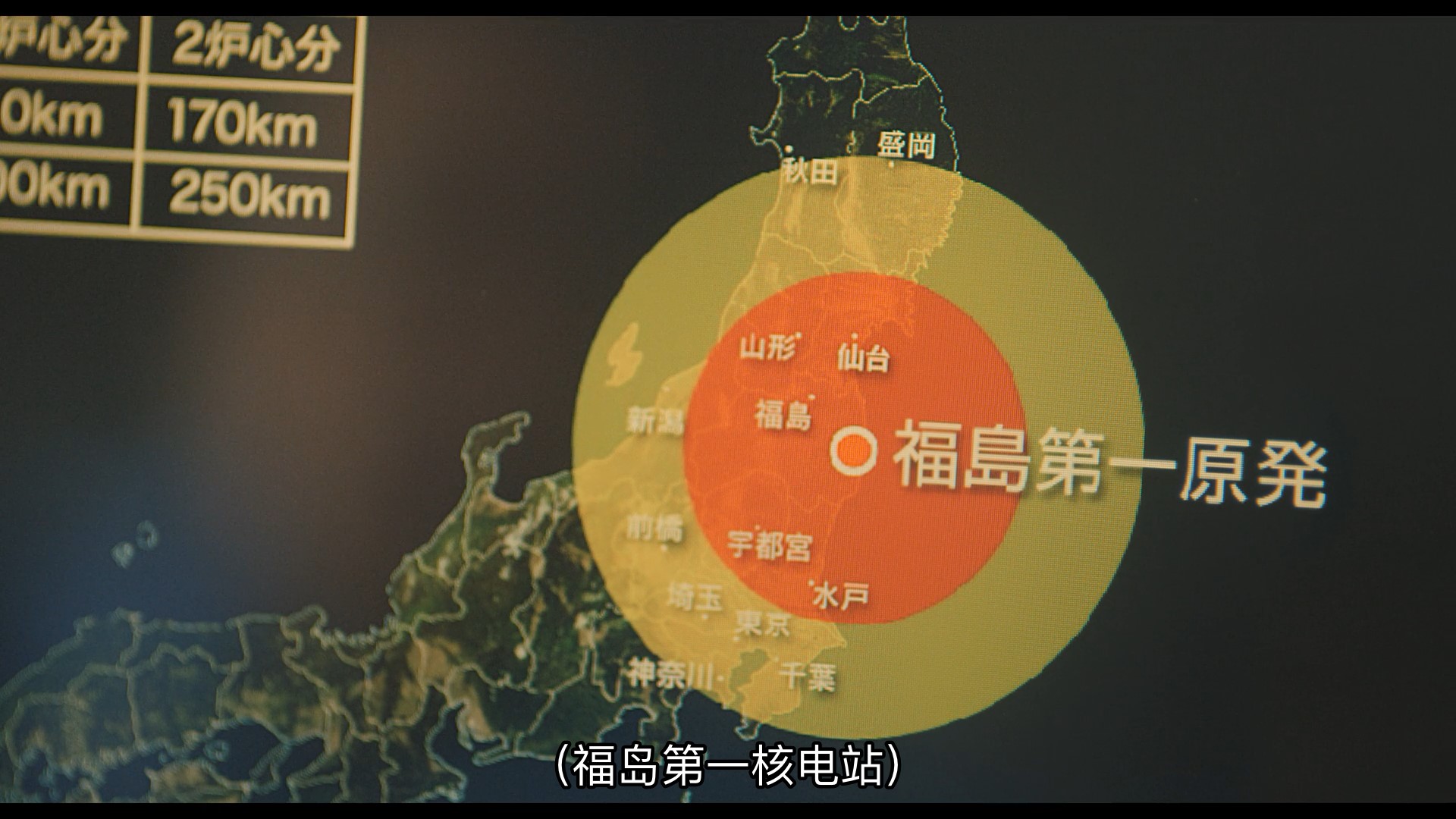
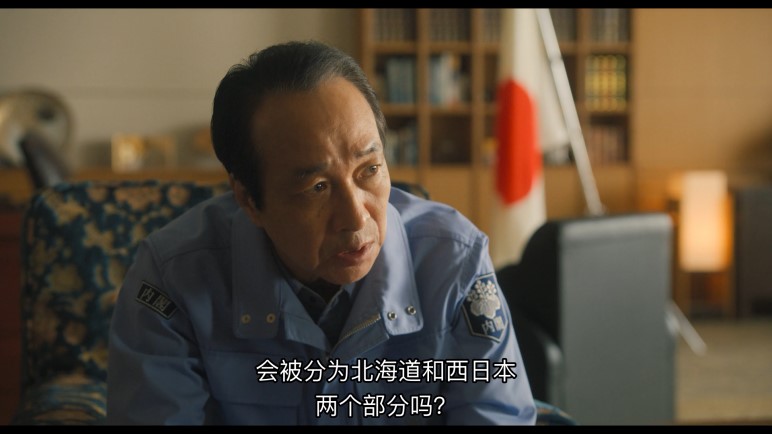
This picture fully illustrates how harmful the Fukushima crisis would be to Japan if it had its worst consequences. But the ridiculous thing is that this is a picture that only appeared in episode 8. Shouldn't such an assessment start in episode two?
Compared with Chernobyl, although the problem was caused by serious personnel negligence at the beginning, after the incident, the national mobilization mechanism of the Soviet Union still invested a lot of manpower and material resources in the rescue in order to save the situation. Like fighting, the personal sacrifices involved are almost negligible. When dealing with similar incidents in Japan, although the rigorous style has protected the safety of a large number of on-site workers, it is hard to say that they have invested huge resources and efforts in solving the problem. There are some systemic problems here, as well as practical ability problems, which may be the place where other countries criticized Japan later.
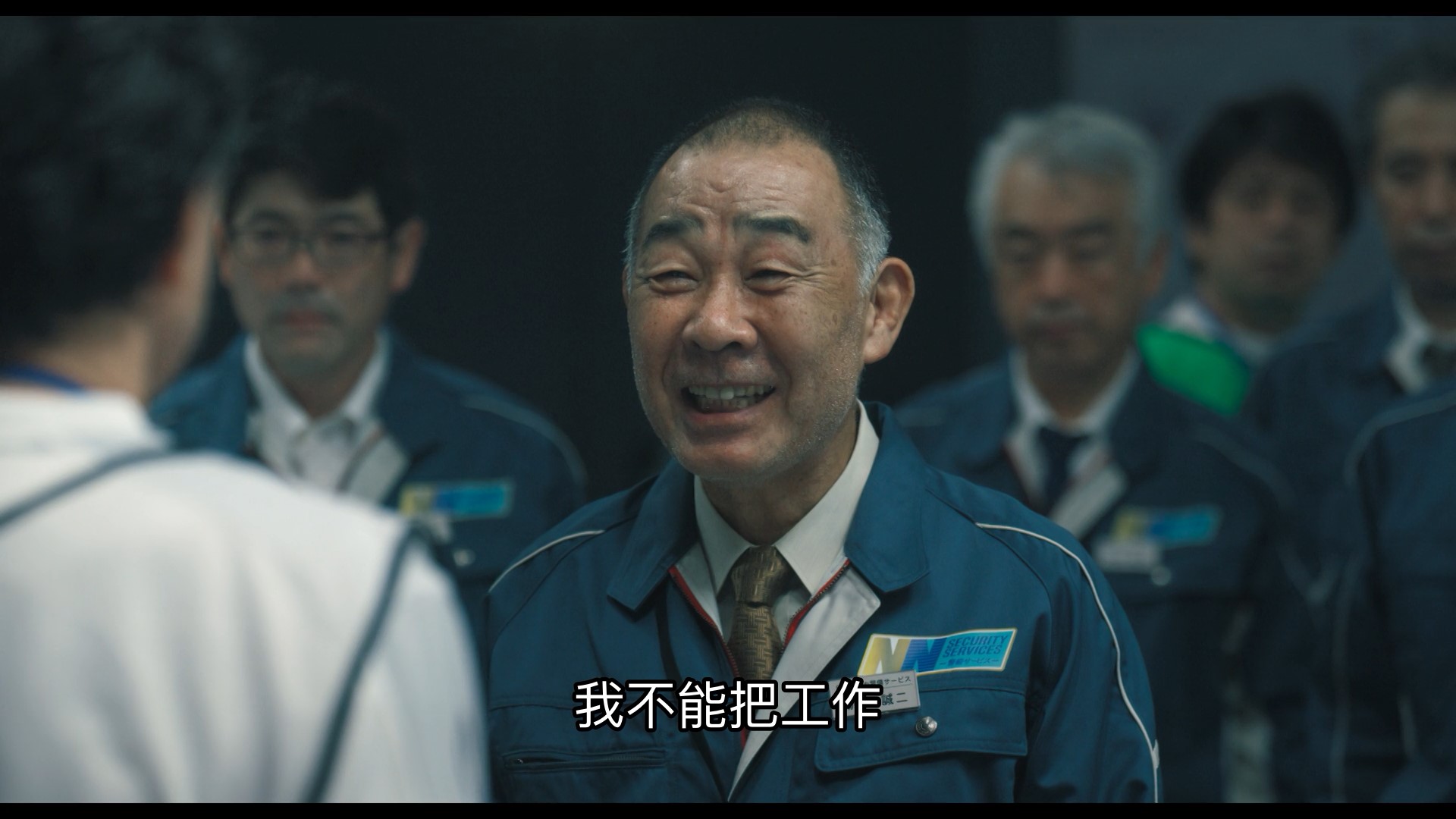
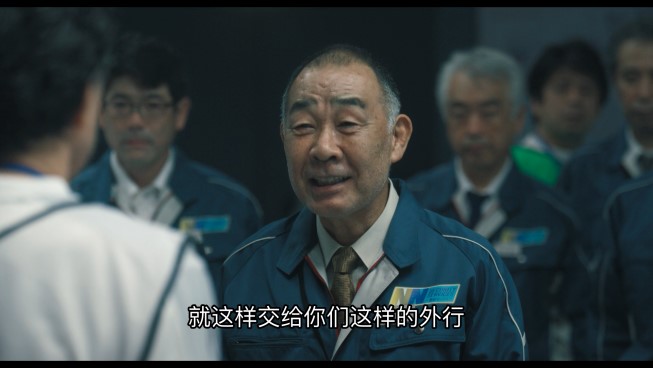
The rhetoric of some characters in the play when they choose to take the initiative to go to danger is still written quite loudly. It's just that everyone chooses to sacrifice themselves, but as a "company employee", there is no way to ask others to do the same with me. This fully explains "how to provide disaster relief", and there is a big problem with the system.
Of course, the handling of these major disasters involves the customs and customs of each country, institutional regulations, the efficiency of temporary resource allocation, and everyone's understanding and attitude towards the severity of the problem. Countries have different practices. Reviewing the various gains and losses of the Fukushima nuclear accident is not something that can be done by a film and television drama. Through this drama, we can get a glimpse of the general attitude of the Japanese people towards this matter, and it can also trigger our greater reflection: In the field of technology application, although there seem to be many benefits, when we cannot control the biggest risk of technology , should we be more cautious?
The Fukushima nuclear accident and this play, after being written as reportage, affirmed the efforts made by most of the ordinary people. Fortunately, the worst results were indeed avoided, and this is the alarm bell that sounded in the end.

